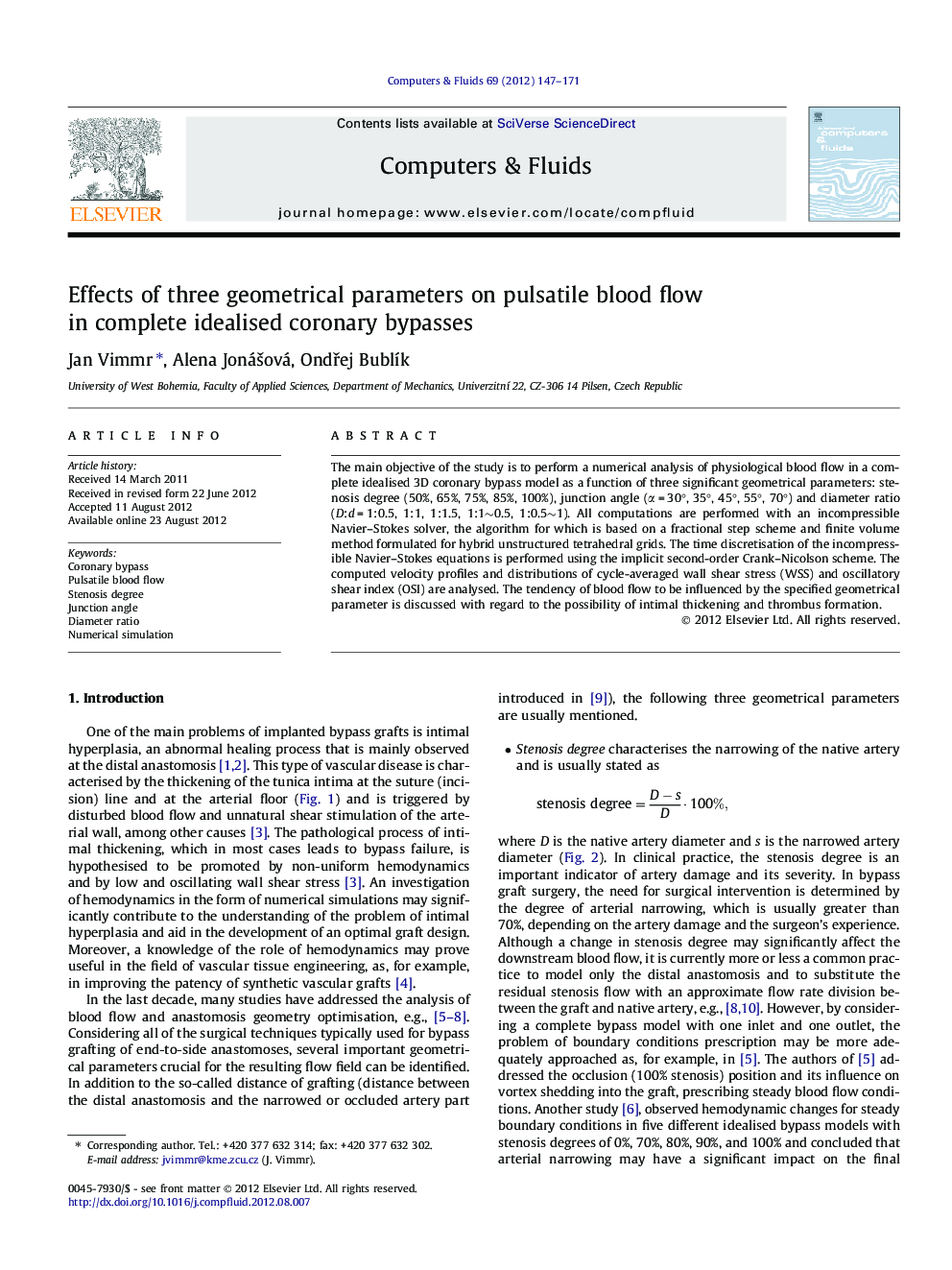| Article ID | Journal | Published Year | Pages | File Type |
|---|---|---|---|---|
| 762409 | Computers & Fluids | 2012 | 25 Pages |
The main objective of the study is to perform a numerical analysis of physiological blood flow in a complete idealised 3D coronary bypass model as a function of three significant geometrical parameters: stenosis degree (50%, 65%, 75%, 85%, 100%), junction angle (α = 30°, 35°, 45°, 55°, 70°) and diameter ratio (D:d = 1:0.5, 1:1, 1:1.5, 1:1∼0.5, 1:0.5∼1). All computations are performed with an incompressible Navier–Stokes solver, the algorithm for which is based on a fractional step scheme and finite volume method formulated for hybrid unstructured tetrahedral grids. The time discretisation of the incompressible Navier–Stokes equations is performed using the implicit second-order Crank–Nicolson scheme. The computed velocity profiles and distributions of cycle-averaged wall shear stress (WSS) and oscillatory shear index (OSI) are analysed. The tendency of blood flow to be influenced by the specified geometrical parameter is discussed with regard to the possibility of intimal thickening and thrombus formation.
► Study of hemodynamics in complete bypass model with tapered and widening grafts. ► Effects of altering graft geometry on flow metrics and consequences for graft patency. ► Fractional step technique and finite volume method for hybrid unstructured grids. ► Implicit second-order time discretisation of the incompressible NS equations. ► Evaluation of numerical results using velocity profiles, cycle-averaged WSS and OSI.
